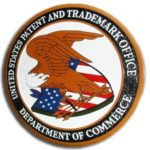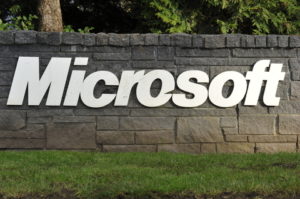The USPTO’s Alice-Based Patentable Subject Matter Hypotheticals With Boilerplate Responses
The USPTO’s Alice-Based Patentable Subject Matter Hypotheticals With Boilerplate Responses

The USPTO recently published hypotheticals to help guide applicants when defining patentable subject matter. Instead of just a case law review, the office provided claim drafting examples. While not legally binding, these provide a helpful roadmap for practitioners when addressing subject matter rejections. I’ve parsed the hypotheticals below and for each one, provided a sample argument that practitioners might make at the USPTO based on each of the hypotheticals that found claims to be patentable.
Because this is a longer article, I created a summary page of the sample arguments to overcome the USPTO’s subject matter rejections.
Patentable Subject Matter Eligibility Test
The USPTO applied the test that has become well-known following the Supreme Court’s Alice v. CLS Bank case.

In each of the hypotheticals, the USPTO applied the three-part test pictured above and summarized below that follows the developing case law on this subject.
(1) Is the claim directed to one of the four patent-eligible subject matter categories: process, machine, manufacture, or composition of matter? If no, the claim is does not patentable. If yes, move to (2).
(2) Is the claim directed to an abstract idea that is a judicial exception to the categories in (1), such as a fundamental economic practice, a method of organizing human activity, an idea itself (standing alone), or a mathematical relationship? If no, the claim contains patent-eligible subject matter. If yes, go to (3).
(3) When taken as a whole, does the claim have additional limitations that amount to significantly more than the abstract idea? If no, the claim is not patentable. If yes, the claim contains patent eligible subject matter.
Hypothetical 1: Removing Malicious Code From Emails
In this hypothetical, the email scanning operation is done in a quarantined memory sector. The hypothetical claim reads:
1. A computer-implemented method for protecting a computer from an electronic communication containing malicious code, comprising executing on a processor the steps of:
– receiving an electronic communication containing malicious code in a computer with a memory having a boot sector, a quarantine sector and a non-quarantine sector;
– storing the communication in the quarantine sector of the memory of the computer, wherein the quarantine sector is isolated from the boot and the non-quarantine sector in the computer memory, where code in the quarantine sector is prevented from performing write actions on other memory sectors;
– extracting, via file parsing, the malicious code from the electronic communication to create a sanitized electronic communication, wherein the extracting comprises scanning the communication for an identified beginning malicious code marker, flagging each scanned byte between the beginning marker and a successive end malicious code marker, continuing scanning until no further beginning malicious code marker is found, and creating a new data file by sequentially copying all non-flagged data bytes into a new file that forms a sanitized communication file;
– transferring the sanitized electronic communication to the non-quarantine sector of the memory; – and deleting all data remaining in the quarantine sector.
Following the subject matter analysis steps above:
(1) Is the claim directed to one of the four patent-eligible subject matter categories: process, machine, manufacture, or composition of matter? YES because it’s a process. Move to (2).
(2) Is the claim directed to an abstract idea that is a judicial exception to the categories in (1), such as a fundamental economic practice, a method of organizing human activity, an idea itself (standing alone), or a mathematical relationship? NO because it is directed towards physically isolating a received communication on a memory sector and extracting malicious code from that communication to create a sanitized communication in a new data file. The USPTO points out that this solution is inextricably tied to the technology and thus not an abstract idea that fits into the judicial exceptions. Therefore, the claim is patent eligible.
Quote to use when responding to a subject matter rejection at the USPTO. When responding to a rejection at the USPTO, you might try a response along these lines.
The current claim is similar to hypothetical 1 in the USPTO’s Abstract Ideas Hypotheticals published on January 27, 2015. In that hypothetical the USPTO pointed out that the claim was patentable because an email communication was isolated in a memory sector and thus inextricably tied to computer technology. In the current claim, the [claim element] is inextricably tied to computer technology, and is thus patent-eligible subject matter.
Hypothetical 2: E-Commerce Outsourcing System/Generating a Composite Web Page
This hypothetical is based on DDR Holdings, LLC v. Hotels.com et al discussed in detail here.
In the patented system, a customer who clicks on an advertising link is not transported from the host web page to the merchant’s web page, but instead is re-directed to a composite web page that combines product information associated with the selected item and visually perceptible elements of the host web page.

The claim is as follows: (The USPTO’s analysis considers two similar claims.)
19. A system useful in an outsource provider serving web pages offering commercial opportunities, the system comprising:
(a) a computer store containing data, for each of a plurality of first web pages, defining a plurality of visually perceptible elements, which visually perceptible elements correspond to the plurality of first web pages;
(i) wherein each of the first web pages belongs to one of a plurality of web page owners;
(ii) wherein each of the first web pages displays at least one active link associated with a commerce object associated with a buying opportunity of a selected one of a plurality of merchants; and
(iii) wherein the selected merchant, the outsource provider, and the owner of the first web page displaying the associated link are each third parties with respect to one other;
(b) a computer server at the outsource provider, which computer server is coupled to the computer store and programmed to:
(i) receive from the web browser of a computer user a signal indicating activation of one of the links displayed by one of the first web pages;
(ii) automatically identify as the source page the one of the first web pages on which the link has been activated;
(iii) in response to identification of the source page, automatically retrieve the stored data corresponding to the source page; and
(iv) using the data retrieved, automatically generate and transmit to the web browser a second web page that displays:
(A) information associated with the commerce object associated with the link that has been activated, and
(B) the plurality of visually perceptible elements visually corresponding to the source page.
Following the subject matter analysis steps above:
(1) Is the claim directed to one of the four patent-eligible subject matter categories: process, machine, manufacture, or composition of matter? YES because it’s a machine. Move to (2).
(2) Is the claim directed to an abstract idea that is a judicial exception to the categories in (1), such as a fundamental economic practice, a method of organizing human activity, an idea itself (standing alone), or a mathematical relationship? NO because “the claim addresses a business challenge (retaining website visitors) that is particular to the Internet.” The USPTO points out that the claim does not “merely recite the performance of some business practice known from the pre-Internet world along with the requirement to perform it on the Internet. Instead, the claimed solution is necessarily rooted in computer technology in order to overcome a problem specifically arising in the realm of computer networks,” quoting the DDR holding. Therefore, the claim is patent-eligible. The USPTO (and Federal Circuit) went on to step 3 and thus it’s worth reviewing as well.
(3) When taken as a whole, does the claim have additional limitations that amount to significantly more than the abstract idea? The DDR court and USPTO note that “’not all claims purporting to address Internet-centric challenges are eligible, “but in this case these additional limitations amount to more than simply stating “apply the abstract idea on the Internet.” Thus, under this third prong, the subject matter is patent-eligible subject matter.
Quote to use when responding to a subject matter rejection at the USPTO. When responding to a rejection at the USPTO, you might try a response along these lines:
The current claim is similar to hypothetical 2 in the USPTO’s Abstract Ideas Hypotheticals published on January 27, 2015. In that hypothetical the USPTO pointed out that the claim was patentable because the claim addressed a business challenge (retaining website visitors) that is particular to the Internet, which is not among the judicial exceptions to patentable subject matter. In the current claim, the [claim element] also addresses a business challenge that is particular to the Internet, and is thus patent-eligible subject matter. And even if the claim were to be found to fit into one of the judicial exceptions to patentable subject matter, the additional limitations in the claim directed to [claim element] amount to more than simply stating “apply the abstract idea on the Internet.” See also DDR Holdings, LLC v. Hotels.com et al., 113 USPQ2d 1097 (Fed. Cir. 2014).
Hypothetical 3: Digital Image Processing

This hypothetical is based on Research Corporation Technologies, Inc. v. Microsoft Corp.
In the patented method, “the inventor has improved upon previous halftoning techniques by developing an improved mask called a “blue noise” mask. The blue noise mask requires less memory than previous masks and results in a faster computation time while improving image quality. The blue noise mask is produced through an iterative mathematical operation that begins with generating a dot profile with blue noise properties from an image at a 50% gray level using a blue noise filter. Subsequently, additional dot profiles are generated at differing gray levels. As pixels of the dot profile change across the gray levels, these changes are encoded in a cumulative array. Once all the dot profiles are built, the cumulative array becomes the blue noise mask.”
The claim is as follows: (The USPTO’s analysis considers 3 similar claims.)
1. A computer-implemented method for halftoning a gray scale image, comprising the steps of:
– generating, with a processor, a blue noise mask by encoding changes in pixel values
across a plurality of blue noise filtered dot profiles at varying gray levels;
– storing the blue noise mask in a first memory location;
– receiving a gray scale image and storing the gray scale image in a second memory
location;
– comparing, with a processor on a pixel-by-pixel basis, each pixel of the gray scale image
to a threshold number in the corresponding position of the blue noise mask to produce a binary
image array; and
– converting the binary image array to a halftoned image.
Following the subject matter analysis steps above:
(1) Is the claim directed to one of the four patent-eligible subject matter categories: process, machine, manufacture, or composition of matter? YES because it’s a process. Move to (2).
(2) Is the claim directed to an abstract idea that is a judicial exception to the categories in (1), such as a fundamental economic practice, a method of organizing human activity, an idea itself (standing alone), or a mathematical relationship? YES because “the mathematical operation of generating a blue noise mask is recited in the claim, [and thus,] the claim is “directed to” a judicial exception.” Move to (3).
(3) When taken as a whole, does the claim have additional limitations that amount to significantly more than the abstract idea? YES, for two reasons. First, “tie the mathematical operation (the blue noise mask) to the processor’s ability to process digital images. These steps add meaningful limitations to the abstract idea of generating the blue noise mask and therefore add significantly more to the abstract idea than mere computer implementation.” Second, “the claimed process with the improved blue noise mask allows the computer to use to less memory than required for prior masks, [resulting] in faster computation time without sacrificing the quality of the resulting image as occurred in prior processes [which in turn] produces an improved digital image. These are also improvements in the technology of digital image processing.” Thus, under this third prong, the subject matter is patent-eligible subject matter.
Quote to use when responding to a subject matter rejection at the USPTO. When responding to a rejection at the USPTO, you might try a response along these lines:
The current claim is similar to hypothetical 3 in the USPTO’s Abstract Ideas Hypotheticals published on January 27, 2015, which is based on Research Corporation Technologies Inc. v. Microsoft Corp., 627 F.3d 859 (Fed. Cir. 2010). In that hypothetical the USPTO pointed out that the claim was patentable because tying the mathematical operation to the processor’s ability to process digital images added significantly more to the abstract idea. In the current claim, [claim element] similarly ties the [algorithm] to the processor’s ability to [perform the claim element]. Further, in the hypothetical, the USPTO notes that the algorithm allows the computer to use less memory than required for prior masks, which allows the computer to to use less memory. Similarly in the current claim, the [claim element] allows a computer to use less memory, which amounts to an innovation in computer technology that adds significantly more to the abstract idea. Thus, [claim #] is patentable subject matter.
Hypothetical 4: Global Positioning System
This hypothetical is based on SiRF Technology Inc. v. International Trade Commission.
In the patented system, the systems and methods in which a server wirelessly coupled to a mobile GPS receiver uses a mathematical model to solve for the mobile receiver position without receiving satellite positioning data or absolute time information from a satellite. These systems and methods improve GPS techniques by enabling the mobile GPS receiver to determine its position more accurately and improve its signal-acquisition sensitivity to operate even in weaksignal environments. In particular, the mobile GPS receiver is a mobile device that includes 10 examples: Abstract Ideas GPS antenna, a GPS receiver, a microprocessor, a display, and a wireless communication transceiver. Using mathematical formulas, the device calculates pseudo-ranges (estimated ranges from the GPS receiver to each satellite in view) based on PN codes received from the satellites, and the transceiver sends the pseudo-ranges to the server.
The claim is as follows: (The hypothetical considers 2 similar claims.)
1. A system for calculating an absolute position of a GPS receiver and an absolute time of
reception of satellite signals comprising:
a mobile device comprising a GPS receiver, a display, a microprocessor and a wireless
communication transceiver coupled to the GPS receiver, the mobile device programmed to
receive PN codes sent by a plurality of GPS satellites, calculate pseudo-ranges to the plurality of
GPS satellites by averaging the received PN codes, and transmit the pseudo-ranges, and
a server comprising a central processing unit, a memory, a clock, and a server
communication transceiver that receives pseudo-ranges from the wireless communication
transceiver of the mobile device, the memory having location data stored therein for a plurality
of wireless towers, and the central processing unit programmed to:
estimate a position of the GPS receiver based on location data for a wireless tower
from the memory and time data from the clock,
calculate absolute time that the signals were sent from the GPS satellites using the
pseudo-ranges from the mobile device and the position estimate,
create a mathematical model to calculate absolute position of the GPS receiver based
on the pseudo-ranges and calculated absolute time,
calculate the absolute position of the GPS receiver using the mathematical model, and
transmit the absolute position of the GPS receiver to the mobile device, via the server
communication transceiver, for visual representation on the display.
Following the steps above,
(1) Is the claim directed to one of the four patent-eligible subject matter categories: process, machine, manufacture, or composition of matter? YES because it’s a machine. Move to (2).
(2) Is the claim directed to an abstract idea that is a judicial exception to the categories in (1), such as a fundamental economic practice, a method of organizing human activity, an idea itself (standing alone), or a mathematical relationship? YES because the claim recites mathematical operations. Move to (3).
(3) When taken as a whole, does the claim have additional limitations that amount to significantly more than the abstract idea? YES because the combination of elements impose meaningful limits in that the mathematical operations are applied to improve an existing technology (global positioning) by improving the signal-acquisition sensitivity of the receiver to extend the usefulness of the technology into weak-signal environments and providing the location information for display on the mobile device. Thus, under this third prong, the subject matter is patent-eligible subject matter.
Quote to use when responding to a subject matter rejection at the USPTO. When responding to a rejection at the USPTO, you might try a response along these lines:
The current claim is similar to hypothetical 4 in the USPTO’s Abstract Ideas Hypotheticals published on January 27, 2015, which is based on SiRF Technology Inc. v. International Trade Commission, 601 F.3d 1319 (Fed. Cir. 2010). In that hypothetical, the USPTO pointed out that the claim was patentable because the claim improves an existing technology (global positioning) by improving the signal-acquisition sensitivity of the receiver to extend the usefulness of the technology into weak-signal environments and providing the location information for display on the mobile device. Similarly, [claim element] improves [technology] and adds significantly more to the abstract idea. Thus, the subject matter is patent-eligible subject matter.
If you have questions, contact me.
If you want IdeaEsq delivered to your inbox, sign up for the daily or monthly newsletter.
